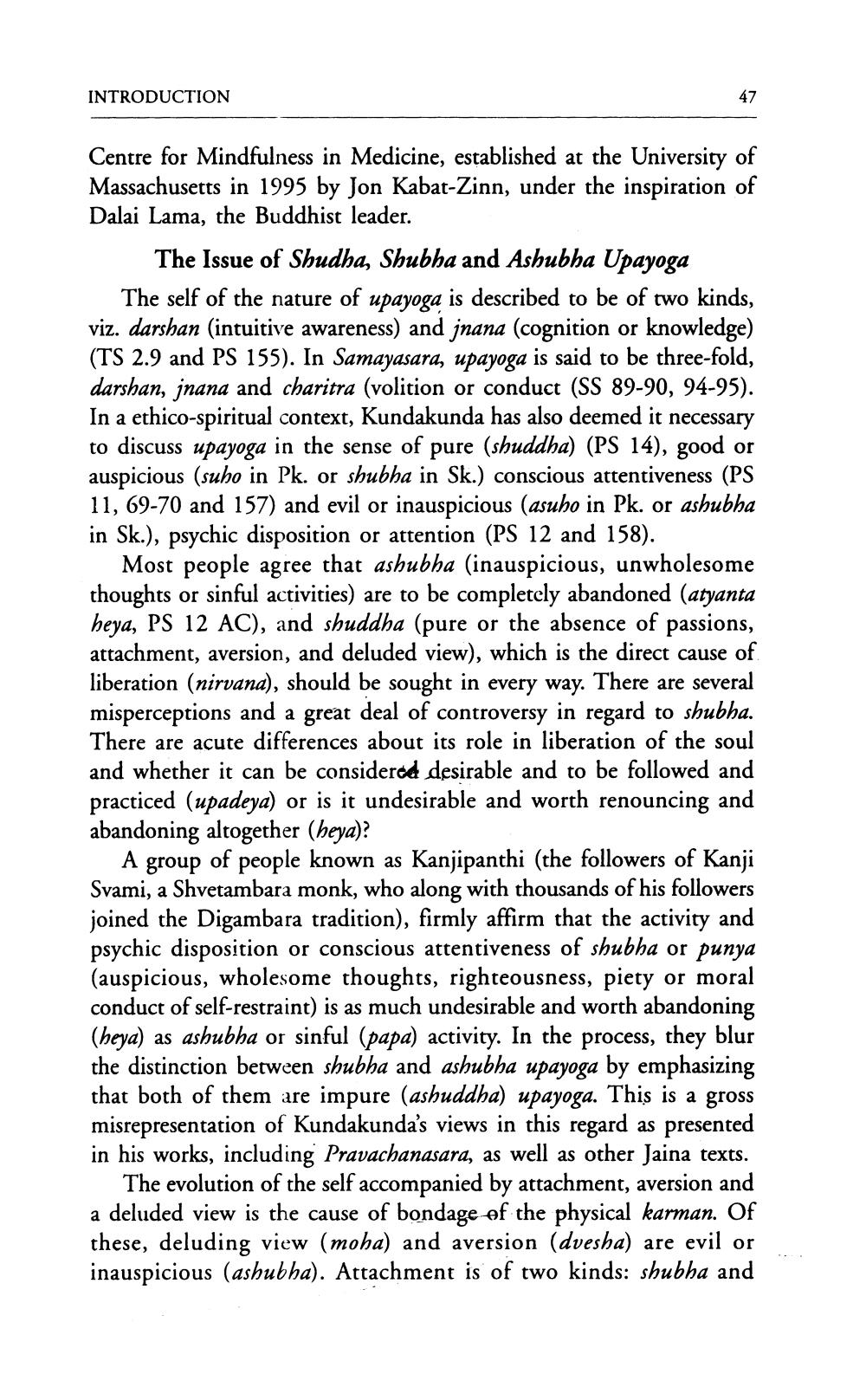________________
INTRODUCTION
47
Centre for Mindfulness in Medicine, established at the University of Massachusetts in 1995 by Jon Kabat-Zinn, under the inspiration of Dalai Lama, the Buddhist leader.
The Issue of Shudha, Shubha and Ashubha Upayoga
The self of the nature of upayoga is described to be of two kinds, viz. darshan (intuitive awareness) and jnana (cognition or knowledge) (TS 2.9 and PS 155). In Samayasara, upayoga is said to be three-fold, darshan, jnana and charitra (volition or conduct (SS 89-90, 94-95). In a ethico-spiritual context, Kundakunda has also deemed it necessary to discuss upayoga in the sense of pure (shuddha) (PS 14), good or auspicious (suho in Pk. or shubha in Sk.) conscious attentiveness (PS 11, 69-70 and 157) and evil or inauspicious (asuho in Pk. or ashubha in Sk.), psychic disposition or attention (PS 12 and 158).
Most people agree that ashubha (inauspicious, unwholesome thoughts or sinful activities) are to be completely abandoned (atyanta heya, PS 12 AC), and shuddha (pure or the absence of passions, attachment, aversion, and deluded view), which is the direct cause of liberation (nirvana), should be sought in every way. There are several misperceptions and a great deal of controversy in regard to shubha. There are acute differences about its role in liberation of the soul and whether it can be considered desirable and to be followed and practiced (upadeya) or is it undesirable and worth renouncing and abandoning altogether (beya)?
A group of people known as Kanjipanthi (the followers of Kanji Svami, a Shvetambara monk, who along with thousands of his followers joined the Digambara tradition), firmly affirm that the activity and psychic disposition or conscious attentiveness of shubha or punya (auspicious, wholesome thoughts, righteousness, piety or moral conduct of self-restraint) is as much undesirable and worth abandoning (heya) as ashubha or sinful (papa) activity. In the process, they blur the distinction between shubha and ashubha upayoga by emphasizing that both of them are impure (ashuddha) upayoga. This is a gross misrepresentation of Kundakunda's views in this regard as presented in his works, including Pravachanasara, as well as other Jaina texts.
The evolution of the self accompanied by attachment, aversion and a deluded view is the cause of bondage of the physical karman. Of these, deluding view (moha) and aversion (dvesha) are evil or inauspicious (ashubha). Attachment is of two kinds: shubha and




